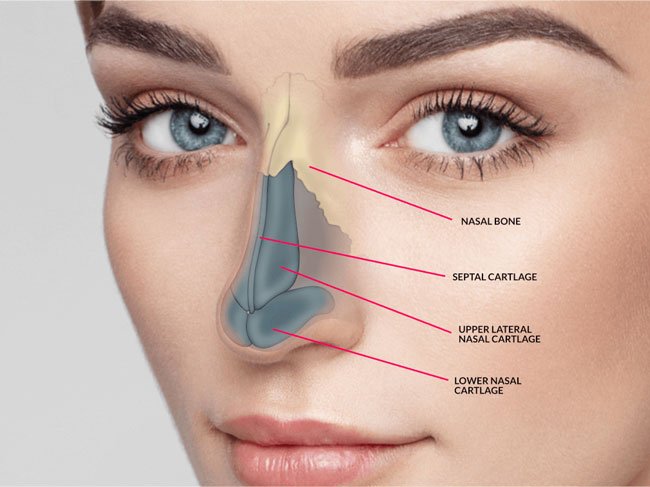What Are Nasal Splints?
Nasal splints, also known as nose splints, are a key part of recovering from surgery on your nose. They can be worn on the outside or inside of the nose and are there to protect it and keep its shape after surgery.
Nasal splints act like a cast for your nose after surgery. They immobilize your nose and help keep its new shape after certain surgical procedures.
The Two Types Of Nose Splints
There are two main types of nose splints used, including internal and external. Internal nose splints are placed inside of the nose and held in place with multiple stitches. External splints are attached to the outside of the nose after a septorhinoplasty. These external splints are commonly glued to the skin with a dissolvable adhesive or taped on with medical bandages.
External splints. External nose splints consist of a bandage that covers your nose and two pieces of metal or thermoplastic running down the length of it to help your nose keep its new shape. It’s usually held in place with surgical tape. They also help keep swelling to a minimum. These devices are used for most nasal surgeries.
Internal splints. Internal splints are usually used after a septoplasty, or correction of a deviated septum. They’re made up of two pieces of silicone or other firm but flexible material inserted inside the nose.
When Do You Need a Nasal Splint?
You can expect to get nasal splints after certain surgeries. These surgeries correct the shape and function of your nose. They can be purely cosmetic or serve another purpose.
Surgery on the nose can do several things, sometimes in the same procedure. These include:
-Improving the cosmetic appearance of your nose
-Helping correct breathing problems
-Correcting any deformities
-Repairing injured or broken tissue
Why Do You Need Nose Splints?
After your septoplasty procedure, nose splints will work to stabilize your nasal tissue and protect your nose as it starts to heal up. Splints are used after a number of different nose procedures. These include:
Surgery For Sinus
Fracture Repair
Rhinoplasties
Septoplasties
The specific type of splint that will be used for your nose will highly depend on the type of surgery that you’re having performed. Septoplasties require internal splints. Rhinoplasties require an external splint.
What’s A Septoplasty?
Deviated septum repair, also referred to as a septoplasty procedure, is a surgical procedure to correct a crooked septum. The septum of the nose is the wall that is situated between the two different nostrils. The septum is made up of cartilage and bone.
After a deviated septum repair is performed, your surgeon will fill your nasal cavity with gauze and an internal splint. This works to stabilize your septum and provide necessary compression to the area to prevent bleeding complications.
What’s A Rhinoplasty?
Most commonly referred to as a nose job, a rhinoplasty is a procedure performed to enhance the appearance of the nose or enhance breathing. Rhinoplasties are one of the most common procedures performed by head and neck doctors, even more than septorhinoplasty procedures.
Once the rhinoplasty is completed, your surgeon will apply an external splint to your nose. This will be to keep the nasal tissue stabilized while the healing happens. In some cases, your surgeon may decide to use steri-strips or surgical tapes instead of external nose splints.
What Is A Nasal Fracture Procedure?
Even though most of the nose is made up of cartilage, there is a bony part at the top. When the nose is broken or fractured, it needs to be realigned. Most times, realignment can be easily done by the hands of a skilled doctor. However, sometimes the realignment requires surgery to bring the nose back to its original shape.
Your doctor will apply an external splint after the procedure to help stabilize the nose. External splints are typically kept in place for about one to two weeks. Each case varies from the next, so it’s best to ask your doctor how long you’ll need to leave your splints on.







